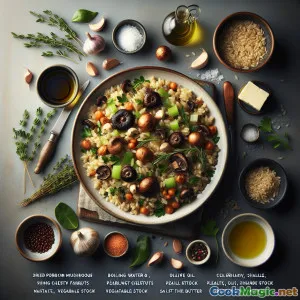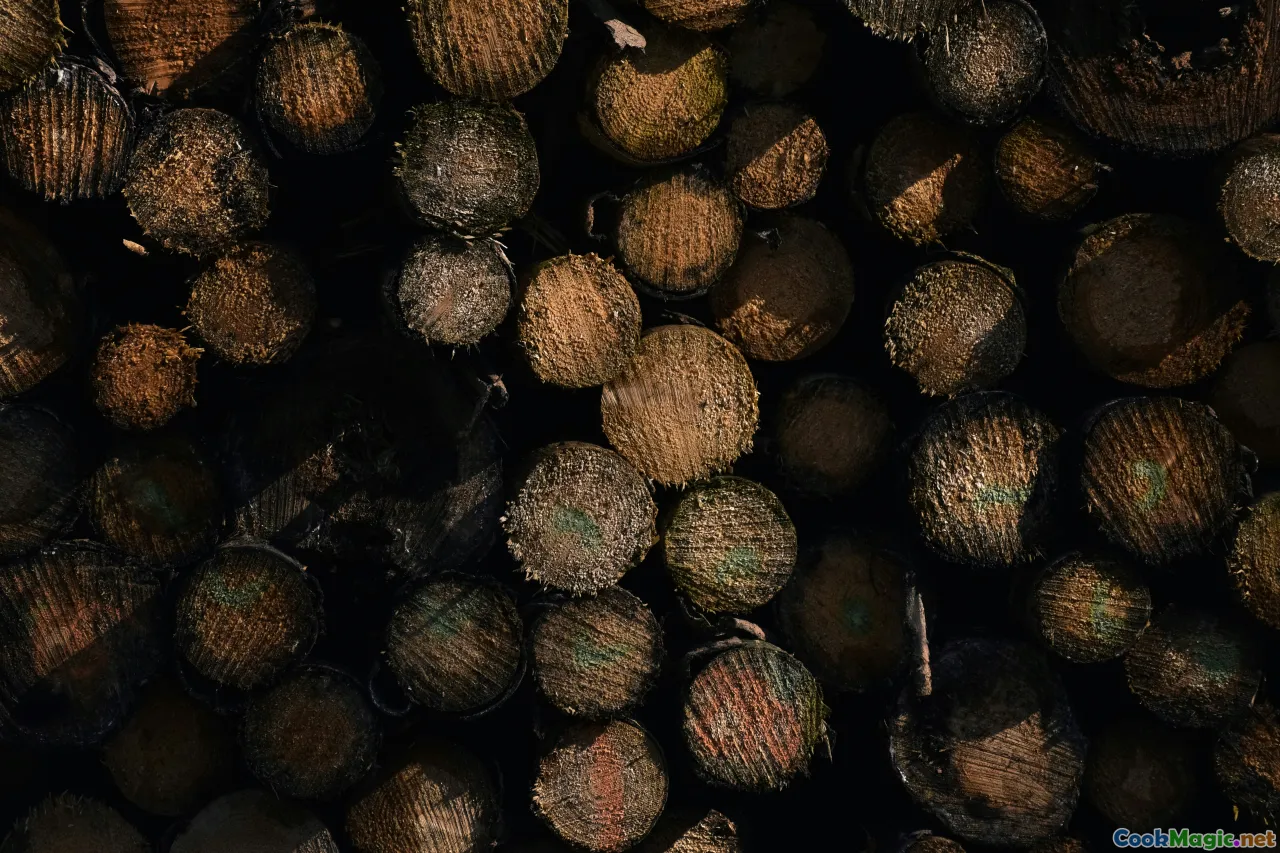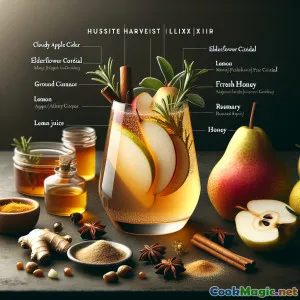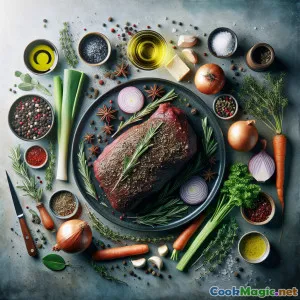
浓郁的牛肝菌与栗子的意大利胚芽米饭
(Hearty Porcini and Chestnut Farro Pilaf)
(0 评论)食材
营养
- 份量: 4
- 每份大小: 一碗丰盛的份量(250克)
- Calories: 390 kcal
- Carbohydrates: 64 g
- Protein: 10 g
- Fat: 9 g
- Fiber: 8 g
- Sugar: 3 g
- Sodium: 720 mg
- Cholesterol: 5 mg
- Calcium: 55 mg
- Iron: 3.1 mg
制作步骤
-
1 - 将牛肝菌泡发:
将干牛肝菌放入碗中,倒入沸水覆盖,浸泡20分钟。蘑菇回软后捞出,挤出多余水分,粗略切碎,并保留浸泡液。
-
2 - 准备基础香料:
在中火的宽口锅中加热橄榄油。加入红葱头和芹菜,撒上一小撮盐,翻炒4-5分钟,直到软化。
-
3 - 加入大蒜和牛肝菌:
加入剁碎的大蒜和切碎的牛肝菌。再煮2分钟,直到散发香气。
-
4 - 烘烤法罗小麦:
加入洗净的法罗小麦。翻炒并搅拌1–2分钟,轻度烘炒谷粒。
-
5 - 用牛肝菇汤汁去锅底:
过滤保留的牛肝菌浸泡液以去除颗粒,然后倒入锅中。刮下锅底的金黄色碎屑以获得最大风味。
-
6 - 用高汤和栗子小火慢炖。:
加入热的蔬菜高汤和切碎的栗子,以及百里香。用盐和胡椒轻微调味。搅拌均匀,煮至温和的微沸,然后盖上盖子。
-
7 - 把皮拉夫煮至软嫩。:
用小火煨煮,偶尔翻动一次或两次,大约20分钟,直到法罗米变得饱满、液体被吸收。若有需要,请再加入高汤,以确保谷粒刚好没入汤汁中。
-
8 - 完成并静置:
关火。加入黄油(如需要也可用植物性黄油),调味,盖上盖子静置5分钟,让谷粒吸收风味。
-
9 - 上菜和装饰:
用叉子把皮拉夫松散。撒上欧芹和额外的百里香。趁热享用,作为带泥土气息的秋季配菜或素食主菜。
将干牛肝菌放入碗中,倒入沸水覆盖,浸泡20分钟。蘑菇回软后捞出,挤出多余水分,粗略切碎,并保留浸泡液。
在中火的宽口锅中加热橄榄油。加入红葱头和芹菜,撒上一小撮盐,翻炒4-5分钟,直到软化。
加入剁碎的大蒜和切碎的牛肝菌。再煮2分钟,直到散发香气。
加入洗净的法罗小麦。翻炒并搅拌1–2分钟,轻度烘炒谷粒。
过滤保留的牛肝菌浸泡液以去除颗粒,然后倒入锅中。刮下锅底的金黄色碎屑以获得最大风味。
加入热的蔬菜高汤和切碎的栗子,以及百里香。用盐和胡椒轻微调味。搅拌均匀,煮至温和的微沸,然后盖上盖子。
用小火煨煮,偶尔翻动一次或两次,大约20分钟,直到法罗米变得饱满、液体被吸收。若有需要,请再加入高汤,以确保谷粒刚好没入汤汁中。
关火。加入黄油(如需要也可用植物性黄油),调味,盖上盖子静置5分钟,让谷粒吸收风味。
用叉子把皮拉夫松散。撒上欧芹和额外的百里香。趁热享用,作为带泥土气息的秋季配菜或素食主菜。
关于 浓郁的牛肝菌与栗子的意大利胚芽米饭 :的更多信息
Porcini & Chestnut Farro Pilaf: Story, Tips, and Inspiration
This Porcini & Chestnut Farro Pilaf is an inviting dish drawing upon earthy, woodland influences across British and wider European culinary tradition—bridging rural cuisine with the heart of modern vegetarian cooking. The core of the pilaf is wholesome farro, a hearty ancient grain appreciated for its bouncy, nutty texture and resistance to overcooking.
Dried porcini are prized throughout Europe, but they particularly shine in British and continental autumnal dishes, evocative of cozy forests and harvest months. Their intense savory, umami-rich taste delivers aromatic depth—combined here with the buttery sweetness of chestnuts, which appear in centuries-old English country fare. Pilafs themselves, though a staple across Eurasia, easily accommodate local crops and flavors, with Britain increasingly embracing grains like farro and barley in creative, healthy dishes.
Cultural and Seasonal Relevance
Pilafs are traditionally a reflection of regional abundance and make clever use of storeable goods, suitable for English winter pantries. Chestnuts, especially, have a festive feel in the UK, being roasted at Christmas markets, while mushrooms claim special status in English wild-foraging culture.
This dish naturally welcomes vegan and vegetarian adaptations without compromising on comfort or flavor, underlining a new wave of 'British gastronomy.' Olive oil provides the flavor-forward fat, but an optional late swirl of butter (or a non-dairy alternative) delivers additional richness for the final personality boost.
Tips for Success:
- Soaking Porcini Carefully: Always strain the soaking liquid through a coffee filter or cloth to avoid grit.
- Using Pre-Cooked Chestnuts saves a great deal of effort and keeps the nutty sweetness up front—find them vacuum packed or in jars.
- Pearled Farro is best for speed; wholegrain provides more chew if you don’t mind longer cooking.
- Substitutions: Barley is a robust stand-in for farro. Shiitake can substitute for porcini in a pinch; walnuts can partly replace chestnuts for different texture.
- Be mindful with salt, as porcini soaking liquid or commercial stocks can contribute a lot—always taste as you go.
Why This Dish Shines:
It’s both rustic and elegant, equally happy gracing a Sunday roast table as starring in a vegetarian main course. Despite the modest list of humble ingredients, it packs dimension when finished with fresh herbs—thyme and parsley lifting alongside the duskiness of mushrooms and crayons of chestnut.
Cooks’ Notes:
- Great the next day: as with risottos and grain salads, leftovers taste even better after marinating together overnight.
- Easily transportable for potlucks or work lunches.
- Pair with a robust English ale or smoky cup of lapsang souchong for a textbook autumn meal.
Historical Roots:
While pilaf has roots in ancient Persia and the Mediterranean, migrations through Europe saw it adapted to new environments—the English version embraces woodland ingredients. Farro was once far more common in British soils, and is now reclaimed by chefs for its texture and nutritive value, connecting the nation's culinary past with the green-driven cuisine of today.
Unique Aspects:
- Packs impressive protein and fiber, while keeping things plant-central.
- Brings a potent aroma and wooded character with minimal specialty shopping.
- Unusual pairing of mushrooms and chestnut against farro—a combination you won’t often find, but once tasted becomes comfort food in an instant.
Whether you're seeking a holiday side, warming weekday dinner, or creative vegetarian centerpiece, this pilaf celebrates the rich bounty of Britain's hedgerows and harvest, championing delicious tradition and new culinary invention all at once.

























